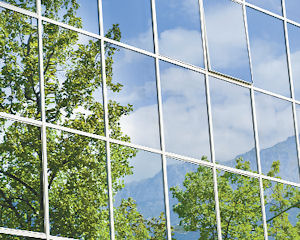Building owners, builders, architects and others in the real estate development industry are preparing for a new set of green building regulations that could potentially increase construction costs. Starting Jan. 1, 2011, California will be the first state in the nation to implement a statewide green building standards code, which applies to residential, commercial and public buildings. The code was adopted by the California Building Standards Commission. The new code, also known as CALGreen, requires every new building constructed in the state to reduce water consumption by 20 percent, divert 50 percent of construction waste from landfills and install low-pollutant-emitting materials. Another component will require separate water meters for non-residential buildings’ indoor and outdoor water use. There will also be requirements for moisture-sensing irrigation systems for larger landscape projects and mandatory inspections of energy systems for non-residential buildings of more than 10,000 square feet. The state is also providing two tiers of additional CALGreen recognition for businesses that comply with additional green measures that are voluntary. The code is expected to reduce greenhouse gas emissions by 3 million metric tons by 2020. While the code is not part of the state’s Warming Solutions Act of 2006, or Assembly Bill 32, it is expected to add to the state’s goals of complying with the law, which requires the state to reduce its carbon emissions to 1990 levels by the year 2020. However, while greenhouse gas emissions and water and energy use are expected to drop, construction cost and complexity for building owners and developers is expected to rise. Higher development costs At a forum focused on green energy, technology and initiatives hosted by the Valley Industry Association on Oct. 20, Santa Clarita Assistant City Planner II David Peterson said developers in the city will see a cost difference. “We’re looking at a potential cost-of-building increase of between 3 and 12 percent depending on the project,” he said. After the event, he added that the use of a greater number of green components and a larger project could lead to costs on the higher end of the scale Building owners and tenants could be affected if developers pass the cost increases onto the consumer, he said. However, Jim Backer, president of Valencia-based JSB Development, said that is not as likely to happen considering competition in the market right now. Backer, whose company builds commercial developments, said many in the development community are concerned about having an additional set of regulations. “It just continues to add to the layer of costs and complexity for getting the project done,” he said, adding the new requirements coupled with additional levels of inspection will likely add to the time it takes for project completion. “I think this particularly makes it challenging for the smaller developers like myself who are building buildings that are probably less than 50,000 square feet.” Delayed effect Backer said he doesn’t suspect the development industry will feel the full impact of the new code for the next couple of years. “There is really no one building anything right now,” he said, adding that his company’s last shell building project took place last year in June. Jeff Gould, who chairs the San Fernando Valley Green Team’s green building task force, said that while there might be some higher upfront costs, building owners and tenants will ultimately receive the investment back in savings with lower utility bills. The new CALGreen code could also serve as an incentive for more building owners to try to obtain LEED certification since they will already have the basic level of green standards in place, said Gould, who is also a senior associate at Colliers International and a LEED Accredited Professional. Gould said developers can prepare for the code through education and collaboration. “Developers are preparing by hiring LEED consultants, hiring architects, (and) hiring engineers that really understand the components of sustainability, understand LEED certification … and ultimately are going to understand CALGreen,” he said.
